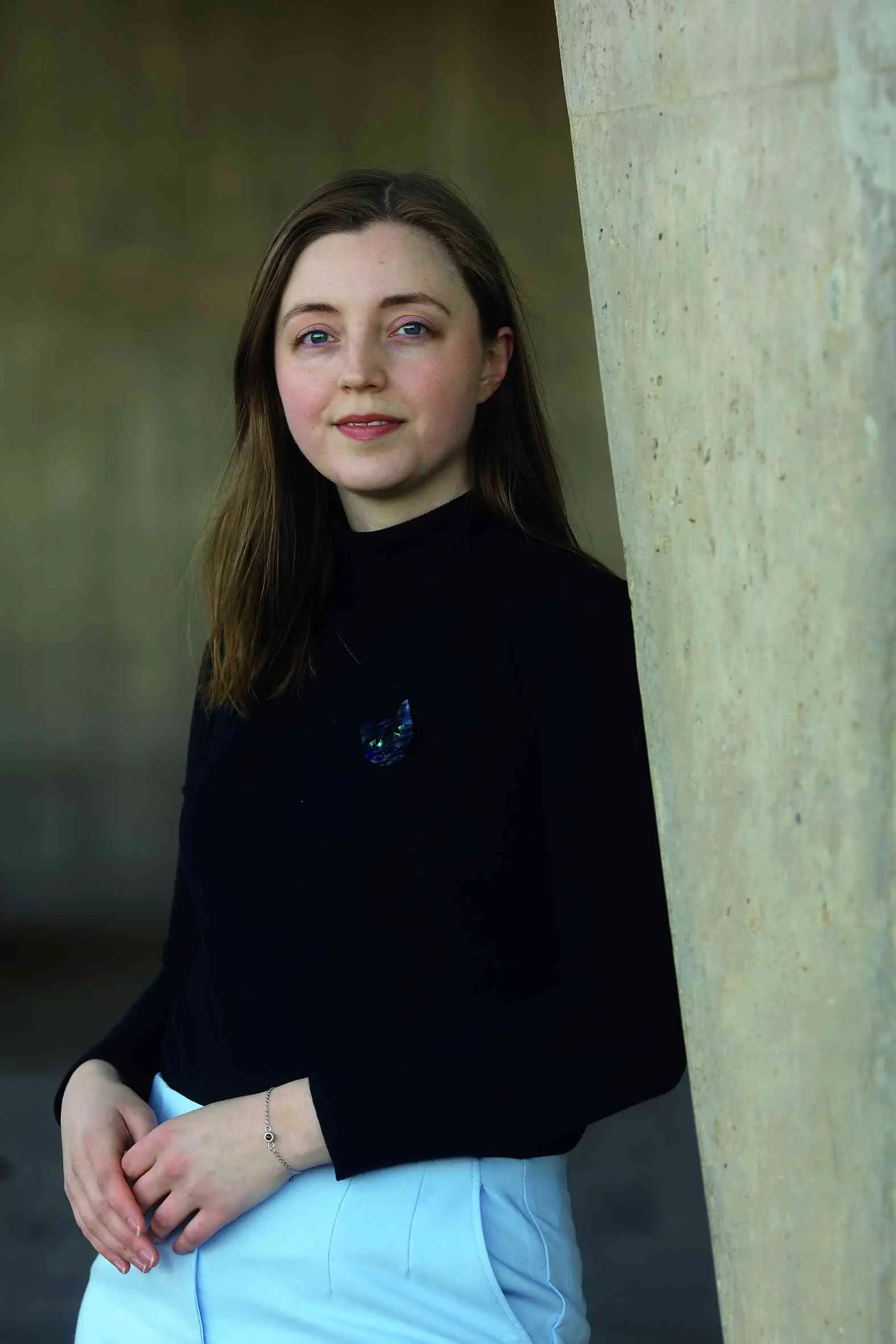On campus Heritage collection
“We have thousands of objects, such as portraits of professors and complex mechanical calculators that have been used in scientific research,” says Charlotte Rixten, head of the Academic Heritage Department. “In addition, tens of thousands more objects are managed by the faculties themselves, such as the Faculty of Aerospace Engineering’s enormous satellites.” The department also deals with university history and art objects. University historian Abel Streefland is part of the team, and last summer there was an art challenge. “We invited two artists to create an artwork to be displayed in the water in front of the Faculty of Industrial Design Engineering.”
Expedition
An ambitious project was recently launched to better highlight the heritage of all the faculties. As Rixten explains, this involves plenty of customisation. “The Faculty of Architecture and the Built Environment, for example, has its own collection of chairs and scale models. So, our added value is very different there than for the faculty of Electrical Engineering, Mathematics and Computer Science. Although the latter has highly committed volunteers, they have all kinds of objects that have not yet been mapped.” Two new employees were hired to assist with the project. “One of them will go on expeditions to the faculties, to describe new objects. For example: we know there is an item there, but what is it exactly? It is a process of discovery, together with the faculties, and consultation on what they could do with the object.” Rixten has already embarked on an expedition within TU Delft. “This university is very different from Villa Mondriaan, the museum in Winterswijk where I used to be the director. Things are rather set in stone there: this is our building and we have changing exhibitions in these halls. At the university, our heritage is everywhere. We are a museum without a museum building.” She spent several hours with curator Marietje Ruijgrok, for example, in the repository of Trésor, the TU Library treasury, where books, magazines, prints, maps and photographs from before 1900 are kept.
A Delft engineer story
One of Rixten’s missions is to make Delft’s academic heritage more visible for, and throughout, the Netherlands. This mission reaches beyond Delft’s municipal boundaries. Take the Waterloopbos near Marknesse in the Noordoostpolder,
for example. “Delft scientists have been doing water research there since the 1950s,” Rixten says. Back then, several large-scale test structures of flood defences and dams were erected. The forest has since been handed over to Natuurmomenten (the Society for the Preservation of Nature), but remnants and ruins of the water works are still there. “I want to give that early embedding of TU Delft in engineering in the Netherlands more attention and visibility.” According to Rixten, there is much awareness at TU Delft about the importance of history and heritage, as evidenced by various research projects. She mentions All Maps as an example: a project by digital curator Jules Schoonman and others. All Maps makes it possible to superpose historical maps over current maps, for historical research, for example. Another one of Rixten’s aims is to highlight the stratification in the Delft engineering story. For example, she is exploring how the university community has started to think differently about the energy issue and collaboration with the fossil industry. There are so many facets to that issue because TU Delft has a huge variety in faculty cultures, with staff and students of varying stature and from all walks of life. “You could compare it to Russian nesting dolls: there is a new story behind every story. It is wonderful to have that time and space to explore everything in-depth. If you don’t know where you came from, you keep going round in circles.”
© Sam Rentmeester

Charlotte Rixten: “At the university, our heritage is everywhere. We are a museum without a museum building.”©Sam Rentmeester
‘If you don’t know where you came from, you keep going round in circles’
The marble Appel
Faculty of 3mE
Rixten: “You need to sit down to see it, but this untitled artwork represents a ship’s propeller. It is made of marble and cast granite. Since this is not Appel’s usual choice of material, it is a very different type of Appel artwork than what most people know him for.”
The Salami
Location: TU Delft Aula entrance
“This artwork was created in 1966 by the artist Carel Visser,” says Rixten. “He thought the Aula looked like a snapping monster, with upper and lower jaws. That is why he created an object to represent a salami, with some slices cut off.”
The sculpture of Prometheus
Location: Mekelpark
Rixten: “This is where old and new come together. The previous artwork was stolen in 2012 and never recovered. The original pedestal stayed, and was reused for a new artwork that represents the silhouette of the stolen Prometheus statue.”
The pedestal of the former Floppy Tower
Location: The body of water in front of the Faculty of Industrial Design Engineering (IDE)
“The Floppy Tower that stood here was a work of art cum experiment by artist and IDE employee Wim Schermer. It was removed after it fell over a few times. We asked two artists, Jan Koen Loman and Niels Albers, to create a new artwork. The intended artwork must also improve the water quality of the surrounding pond. That’s part of the assignment.”
